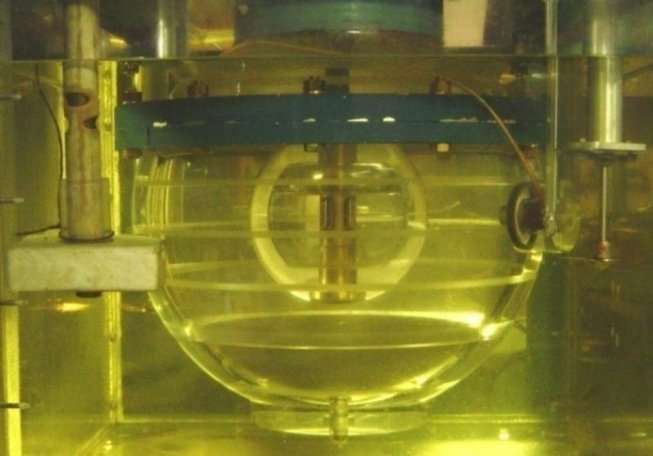New data to improve models of atmosphere circulation

A team of scientists from the Institute of Mechanics, MSU, demonstrated how random fluctuations in the rotation speed and noise influence the number of vortexes in the Couette spherical flow. They report that the level of noise and the flow regime have a complicated nonlinear correlation. The new data will contribute to more exact models of natural flows including atmospheric circulation. The results of the work were published in the Chaos journal.
Couette spherical flow is the flow of liquid in a spherical layer caused by the rotation of its borders. In a laboratory setting, it is studied using two transparent spheres: The outer one is fixed and the inner one rotates at a given speed. This model helps to describe large-scale movements of the atmosphere, oceans, and mantle of the Earth caused by the planet's rotation. All these natural processes are usually turbulent. The first step to turbulence is the loss of stability by a permanent flow, causing vortexes to appear spontaneously in liquids or gases. But what affects the stability and determines further flow regime (e.g. the number of vortexes in the flow)? By answering this question, scientists will be able to better predict climate changes on the Earth.
The regime of the Couette flow is determined by the history of its development, including the value of acceleration with which the rotation speed of the internal sphere changes. This value determines whether there are three or four vortexes forming in the flow. However, there are no stable rotation speeds or accelerations in natural processes, and random variations happen quite often. A team of scientists from the Institute of Mechanics, MSU, demonstrated in a new experiment how the flow regime may be influenced by random fluctuations in the rotation speed or by noises. The experimenters amplified the noises on purpose to see what happens with the flow. The number of vortexes in the liquid was determined both by the naked eye (using aluminum dust particles for visualization) and by means of measuring the flow speed with the laser Doppler anemometer.
The results of the experiments were more complex than the researchers could have suggested. Random fluctuations and liquid flow regimes actually have a correlation between them, but it is nonlinear. When the noises were not excessive, the flow demonstrated three vortexes. The same scenario was observed when there were no noises at all. Next, when the noise levels were high, the liquid seemed to "forget" the influence of acceleration, and four vortexes were formed in the flow. But when the scientists observed the most complex situation, in which the noise levels were average, they found the numbers of vortexes are dependent both on the acceleration value and the noise level, and this dependence is nonlinear.
"It is still to be found out how medium-amplitude noises affect the flow," says Dmitry Zhilenko, a co-author of the work, and a senior research associate of the Institute of Mechanics. "This will help to evaluate the influence of noises on the processes in various natural bodies: pulsars, the atmosphere of the Earth, and atmospheres of other planets. For example, some studies suggest that random fluctuations in the inflow of heat into the atmosphere from the Sun may change the element of atmospheric circulation: Hadley, Ferrel, and polar cells. These cells resemble rings with closed air circulation loops, and the climate of the whole planet directly depends on the atmospheric circulation in them."
More information: Dmitry Zhilenko et al, Wave number selection in the presence of noise: Experimental results, Chaos: An Interdisciplinary Journal of Nonlinear Science (2018). DOI: 10.1063/1.5011349
Journal information: Chaos
Provided by Lomonosov Moscow State University




















